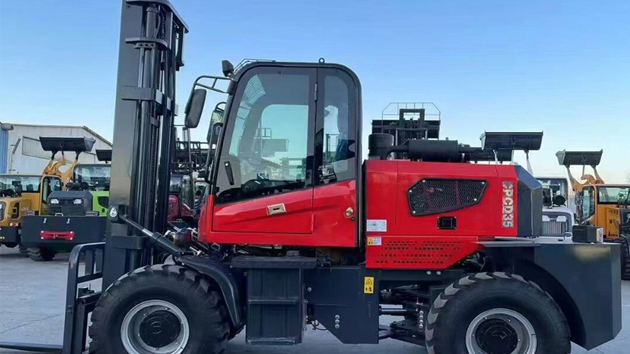Revolutionizing Heavy Load Handling: The Lift Capacity of Off-Road Telescopic Lift Trucks
2025-07-07 05:30:28
Off-road telescopic lift trucks are transforming industries by offering unparalleled lift capacity in rugged environments. This technical report explores the engineering advancements, operational parameters, and industry applications of these powerful machines, emphasizing their critical role in construction, agriculture, and logistics.
### Understanding Lift Capacity in Off-Road Telescopic Lift Trucks The lift capacity of off-road telescopic lift trucks refers to the maximum weight these machines can safely elevate and maneuver under specified conditions. Modern models boast capacities ranging from 6,000 to 20,000 pounds, with some heavy-duty variants exceeding 30,000 pounds. Key factors influencing lift capacity include hydraulic system efficiency, boom design, and chassis stability. Off-road telescopic lift trucks leverage reinforced steel booms and multi-stage hydraulic cylinders to maintain performance even on uneven terrain.
### Engineering Innovations Enhancing Performance Recent advancements in off-road telescopic lift truck design have significantly improved lift capacity. For instance, dynamic load-sensing hydraulics adjust pressure in real-time to prevent overloading, while intelligent counterweight systems optimize balance during heavy lifts. Additionally, high-torque diesel engines and all-wheel-drive configurations ensure consistent power delivery, enabling these machines to handle extreme loads in challenging environments. The integration of telematics further enhances operational safety by monitoring lift capacity thresholds and alerting operators to potential risks.
### Operational Challenges and Solutions Operating off-road telescopic lift trucks at maximum lift capacity presents unique challenges, such as stability risks on slopes or soft ground. Manufacturers address these issues with features like outrigger stabilizers, automatic leveling systems, and load moment indicators. For example, John Deere’s 333G model incorporates a patented oscillating axle that maintains traction while lifting heavy loads on uneven surfaces. These innovations ensure that off-road telescopic lift trucks remain reliable even under strenuous conditions.
### Industry Applications and Case Studies The exceptional lift capacity of off-road telescopic lift trucks makes them indispensable across industries. In construction, they facilitate material handling in remote sites, while agricultural sectors rely on them for loading bulk feed or machinery. A 2023 study by Caterpillar demonstrated that their TH514B model reduced loading times by 40% in forestry operations, thanks to its 14,000-pound lift capacity. Similarly, logistics companies utilize these trucks for container handling in off-road depots, underscoring their versatility.
### Future Trends and Market Projections The global demand for off-road telescopic lift trucks is projected to grow at a CAGR of 6.8% from 2024 to 2030, driven by infrastructure development and automation trends. Emerging technologies, such as hybrid powertrains and AI-assisted load management, promise to further enhance lift capacity while reducing environmental impact. As industries continue to push the limits of heavy load handling, off-road telescopic lift trucks will remain at the forefront of innovation, redefining efficiency and safety standards.













